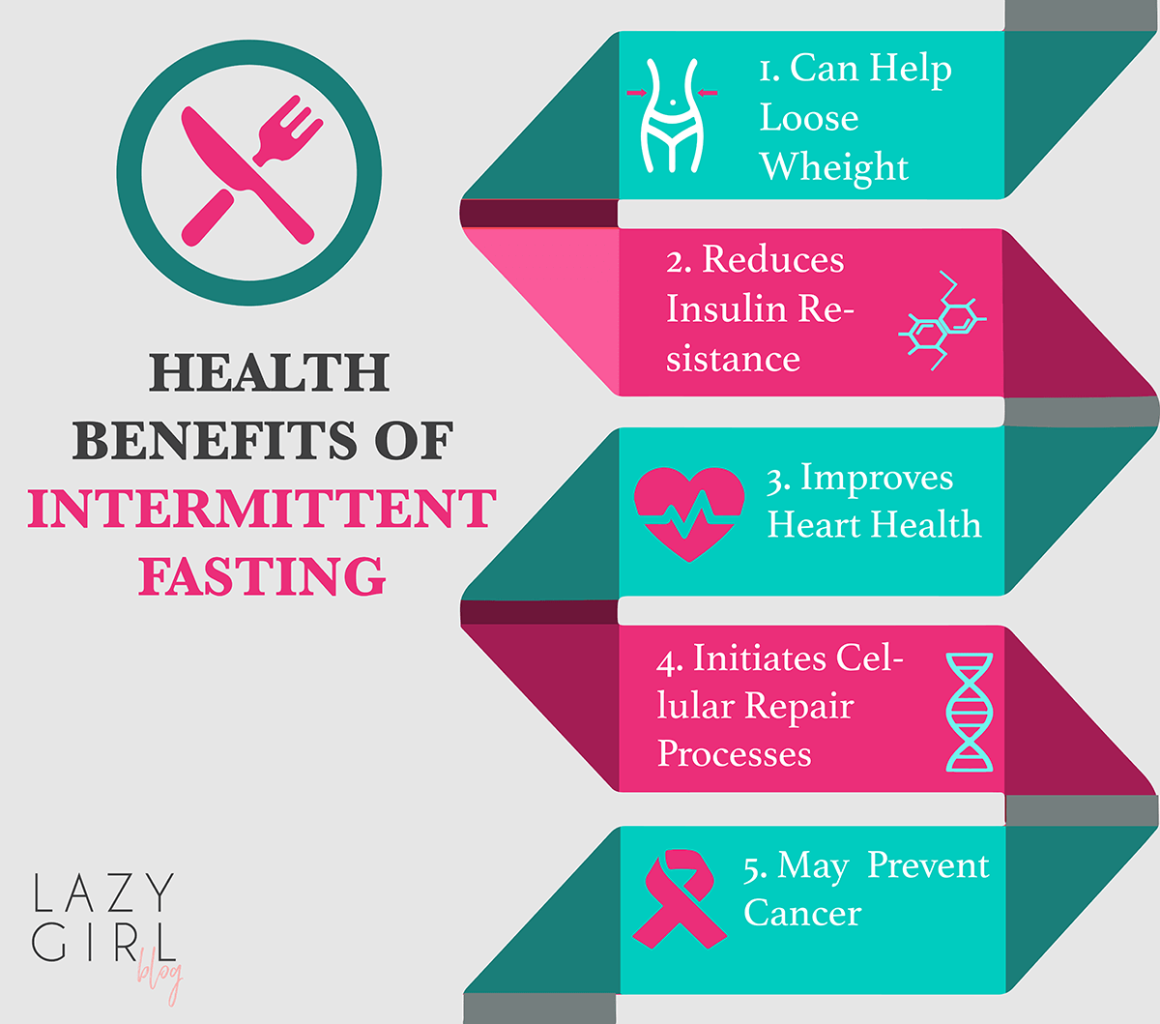How to Do Intermittent Fasting for Rapid Weight Loss
Research has shown that intermittent fasting can be an effective tool in helping you to reach and maintain healthy weight.
Fasting means you aren’t eating for an extended period of time. If you think about it, fasting isn’t all that unnatural.
What is intermittent fasting (IF), exactly?
It’s not a diet necessarily (like paleo, ketogenic, or low-carb), but, more of a style of dieting.
While there are many methods of IF, the underlying principle is consistent.
Restrict the amount of time you’re eating every day.
This post could contain affiliate links. Amazon Associate: You earn no extra from any qualifying purchase for your referrals. See Disclosure
So what’s intermittent fasting?
Contrary to keto, intermittent fasting does not constitute a diet. It’s an eating pattern fashioned around certain feeding and fasting periods.
A 16:8 split is one of the most popular forms for intermittent fasting. This allows people to fast for 16 hours, but only eat within an eight-hour window.
This means that you should avoid eating after 8 p.m. and then go to bed at night. Then, you can eat a large lunch at noon the next morning.
Intermittent fasting fans might opt to fast 18:6 every other day or fast 24 hours each day.
Intermittent fasting comes in many forms and offers many benefits. People have used intermittent fasting to lose weight just like keto. control blood sugar levelsYou will be able to see more clearly.
When you’re fasting, the body doesn’t have to release insulin to break down sugar and resorts to turning fats into ketones.
Plus, if you aren’t binging during your feeding window, you’re naturally consuming fewer calories without having to track it.
Intermittent fasting can also be used to help reset the digestive system.
Science Backs Intermittent Fasting’s Benefits
IF isn’t magic let’s be clear on that, but it can certainly feel like it once you’ve been doing it for a while and especially when you start seeing results.

Study on Intermittent Fasting
Here are some benefits of intermittent fasting as backed up by numerous studies.
- According to Mark Mattson of the National Institute on Aging (part of the US National Institutes of Health), fasting has been shown by research to improve biomarkers of illness, reduce oxidative Stress, and preserve learning and memory function. [2]
- Fasting increases Growth Hormones (GH). [3]
- Autophagy occurs while fasting; it is the body’s way of renewing the cells and getting rid of all the worn-out cells in the body. Anti-aging (longevity) is primarily driven by autophagy. [4] [5]
How do you start intermittent fasting?
Intermittent fasting can be done in many ways. This is because each BODY is unique. You need to be open to trying different things and listening to your body to discover what works for you. These are just a few ways you can get started.
- 16:8Typically, you eat all of your daily calories in a shorter time period (6-8 hours). Then you fast for the rest.
- 5:2: You eat normal five days a weeks. On the other two days, you “fast” by eating between 500 and 600 calories.
- AlterFasting for the nate dayYou alternate eating normal meals with eating 25 percent of your daily calories. A study found that obese adults following an “alternate day” intermittent fasting schedule lost up to 13 pounds over 8 weeks.
You can start slowing down if intermittent fasting causes fatigue, or other symptoms. As with any diet or exercise plan, consult your healthcare provider to determine what’s best for you.
Intermittent fasting and Keto: Do You Want to Combine Both?
It could provide the following benefits if you adhere to the ketogenic lifestyle and also do intermittent fasting.
Intermittent fasting could help your body achieve ketosis sooner than the keto diet. The combination of the diet and fast can help you lose more fat than just the diet.
Combining the ketogenic diet with intermittent fasting is a way to maximize the time someone is in ketosis.
Fasting will be easier and more manageable if you eat a ketogenic high fat, low-carb diet.
Because a keto diet can help you lose weight, make it easier to fast, and not feel lethargic or depressed.
Keto diets and intermittent fasting both have the same metabolic goals—train the body to efficiently burn fat for energy and get into a state of ketosis.
Both methods work by decreasing glucose levels and lowering insulin levels.
Combining keto and intermittent fasting has another advantage: IF can help you enter ketosis faster and possibly achieve higher levels of ketones.
Intermittent fasting encourages ketosis. Beautiful metabolic marriage.
This could result in more weight loss and fewer hunger pangs.
Two of the most popular health trends right now are intermittent fasting and the keto diet.
These methods are popular among health-conscious individuals who want to lose weight or control certain conditions.
Combining the two styles of eating may increase results but they are not suitable for all people, regardless of whether they are used together or separately.
Intermittent fasting can be used primarily to lose weight.
However, research has shown it to be beneficial for health in many other ways.
Before changing your eating habits, consult your doctor.
You want to have a solid game plan and know that you are practicing in a way that’s healthy for you.
If you’ve got the green light and don’t know where to start, the easiest route is to give intermittent fasting a go first.
Later on, you might consider adding keto to your diet and seeing how you feel. Consult your doctor to find the right community for you.

Keto and IF Diet Plan
Maybe you’re thinking about trying the keto diet or experimenting with fasting. Perhaps you’re already doing both. Either way, we’ve provided a sample daily and weekly layout of what a plan might look like for someone on a keto diet who is also integrating some alternate-day fasting and 16:8 time-restricted feeding into their regimen.
Sunday
6:00 am: Water and/or black coffee (no, coffee won’t break the fast)
9:00 am: You can drink more water or black coffee
12:00 pm:TRF ends. You can make a keto-friendly dinner by making a salad with grilled chicken, olive oil, feta cheese, avocado and hard-boiled eggs.
3:00 pm:Have some nuts, nut butter, or coffee with MCT oil and coconut oil.
6:00 pm: 8 – 12oz of a fatty cut of meat (ribeye steak or fatty fish) plus some vegetables; maybe brussels sprouts cooked in butter.
8:00 pm: Small snack of nuts, blueberries, and a piece of strong dark chocolate for “dessert”. This is your last meal for the day.
Monday: Same eating window as yesterday: 12 – 8 pm.
Tuesday: Fasting day. Today was fast day.
Wednesday: Eating period of 12 – 8 pm. Today you might feel hungry if you have fasted since yesterday.
Thursday: Fasting day
Friday: 12 – 8 eating window. You can work out in the morning, or, if your goal is to do a fueled exercise, you can do it between lunch and dinner.
Saturday: Fast day
You should remember that this is just one example from a vast array of possible variations. This can be modified to fit your needs and used as a guideline to create your own fasting routine.
After all of the evidence presented, it’s hard to argue against the keto diet or intermittent fasting. They appear to have benefits for many conditions and diseases as well as non-disease-related functions.
Tips for intermittent fasting to lose weight
It’s not easy to resist the cravings, but there are some easy ways to avoid feeling hungry that can also help you get even more out of your fast:
Don’t skip breakfast – going without your morning meal can be hard. Enjoy a satisfying cup of creamy coffee instead of skipping breakfast Bulletproof Coffee. This simple hack keeps you in a fasted state and keeps the “hanger” away while nourishing your body with good fats.
Get the right fats – The ultimate hack for your intermittent fast: Bulletproof Brain Octane MCT oil XCT oil. They’re MCT oils, but better. MCTs are converted by your body into ketones. This helps you burn fat, curb cravings, and give your brain more energy, better mental performance and less cravings.
Carbohydrates should be cut back – Follow a low carb/keto diet during your eating periods to supercharge the impact of intermittent fasting. You will feel fuller and less hungry if you restrict carbohydrates. Your body will be able to move into fat-burning ketosis much more easily.
Make sure to plan your meals ahead of time – when it’s time to eat, those sweets and snacks start looking mighty tempting. You can avoid eating junk food and binging on carbs by making healthy choices ahead of time. These keto meal prep recipes will help you stay on track.
Intermittent fasting and ketogenic dieting may enhance each other’s effectiveness, it’s unnecessary to combine both. You may choose one or the other depending on your health goals.
Do You Have to Combine Both?
Most people are safe when they combine the ketogenic diet and intermittent fasting.
Intermittent fasting should be avoided by pregnant women, nursing mothers, and people with a history or disordered eating.
Before trying intermittent fasting on a keto diet, people with certain conditions like diabetes or heart disease should consult a doctor.
Though some people may find merging the practices helpful, it’s important to note that it may not work for everyone.
Why Women Shouldn’t Fast
Under these circumstances, it is best to not try to experiment using IF.
If you’re pregnant: With everything said earlier you should know better than to make your body think that you’re starving while being pregnant. Your body’s new energy needs should be your focus.
You’ve had eating disorders in the past. If you’re not good at keeping a balanced eating schedule, this method can cause all sorts of problems for you.
You suffer from chronic stress. Stress can drain your body of energy and fasting is best when your body is already in balance.
Sleeping problems are a problem. Fasting can challenge any of your life rhythms, so it is never a good idea to start it if you’re already having problems with these issues.
You’re completely inexperienced when it comes to working out and diets. This can be very difficult on your body so you should do as much research as possible about how to lose weight. Your physical condition is important.
You don’t need to fast intermittently to reach ketosis. However, it can be a useful tool.
You may reach ketosis quicker if you combine the keto diet and intermittent fasting. It can also lead to greater fat loss.
However, while this method may work wonders for some, it’s not necessary to mix both, and some people should avoid this combination.
You’re welcome to experiment and see whether a combination works best for you. But as with any major lifestyle change, it’s advisable to speak to your healthcare provider first.
If you’ve had a great experience with keto, IF, or both, Please leave a comment below to let me know. I’d love to hear.
Don’t forget to share this article with your friends!





